 — Recommendations are independently chosen by Reviewed’s editors. Purchases you make through our links may earn us a commission.
— Recommendations are independently chosen by Reviewed’s editors. Purchases you make through our links may earn us a commission.Some extra cash in your pocket is always nice, but helping out the environment at the same time? Even better.
We’ve run a lot of tests that look at sustainability, including finding that you should really stop hand-washing your dishes. You might not be in the market for a big-ticket item like a new energy-efficient dishwasher, but in the meantime, here are some easier ways to cut down on household costs while you do a small part to save the planet.
1. Switch out your light bulbs

Using energy-efficient LED bulbs reduces your electric bill.
Some states such as California and Vermont require that residents use energy-efficient light bulbs. Live elsewhere? The next time your lamp goes out, purchase LED light bulbs, which are 75 to 90% more efficient than incandescent ones and can last up to 25 times longer. They can also make a dent in your electric bill: Over 10 years, LED bulbs can save you up to $1,000.
You might even consider smart light bulbs, including our favorite value pick, the Eufy Lumos 2.0. While more expensive than standard LEDs, they may help out if you often forget to switch off lights before heading out the door.
Get the the Eufy Lumos 2.0 smart bulb at Amazon for $19.99
2. Invest in rechargeable batteries
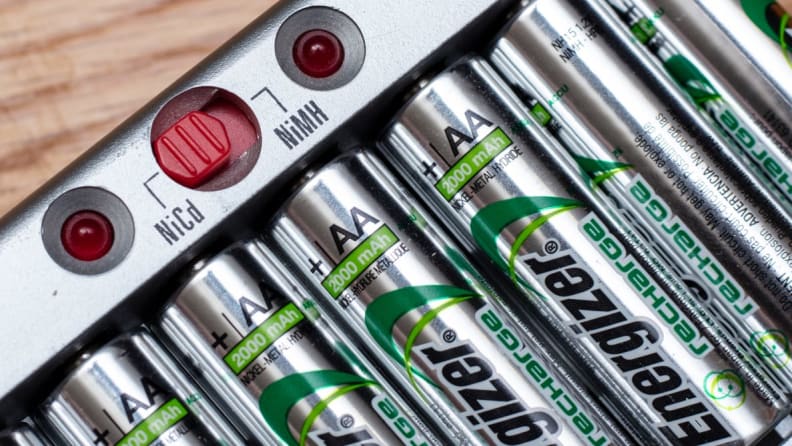
Ditch disposable batteries for rechargeable ones.
If you suspect your voice-activated remote drains batteries quickly, you’re not alone. The typical American household can go through 47 disposable batteries every year to power game controllers, kids’ toys, and other frequently used gadgets, and only a small percentage are recycled. Spending the money up-front on rechargeable batteries will be a larger expense, but will pay off in the long run: They could last for about five years even if you charge them once a week.
Get the Energizer Recharge Universal at Best Buy for $22.99
3. Opt for reusable paper towels
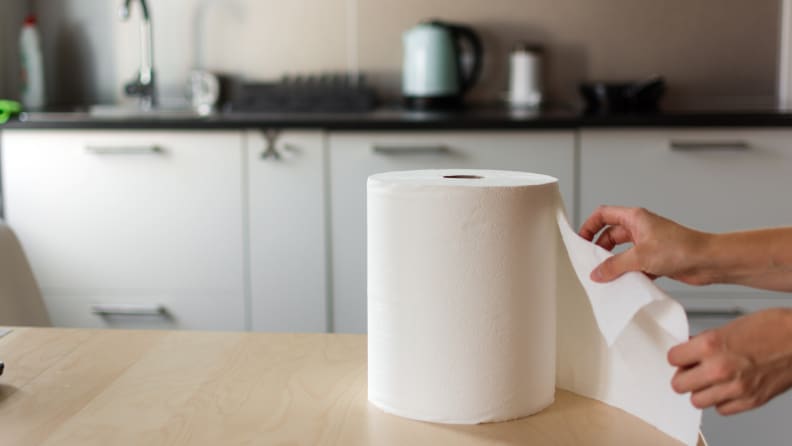
Cut down on paper towels headed for landfills.
Americans buy nearly as many paper towels as every other country combined—we forked over $5.7 billion in 2017. If every week you use one roll of our top pick, Bounty Select a Size, that comes to about $60 per year.
You can cut down on paper towels by picking up other tools, like biodegradable sponges that won’t hang around in landfills for thousands of years compared to the plastic one you probably have in your kitchen. We’re also a fan of the Norwex mop, as its washable microfiber pad doesn’t require cleaning products—just water.
And when you do reach for a paper towel, opt for a product that can withstand multiple uses. If You Care claims one of its rolls can replace 18 standard ones, as you can use an unbleached sheet for an entire week before throwing it in the compost. There's even longer term solutions, like the ones made by Shark Tank-favorite Bambooee that can be cleaned time and time again in the washing machine.
- Get the If You Care reusable paper towels at Amazon for $10.43
- Get the Bambooee reusable bamboo towels at Amazon for $14.99
4. Cut down your clothes dryer use

Loads of laundry dry 25% quicker with these dryer balls.
When it comes to home appliances, dryers use a lot of energy. While major improvements have been made for dishwashers, refrigerators, and washing machines, energy-efficient dryers can use more energy than all of those appliances combined. The average household does 300 loads of laundry annually, though you can check out this Department of Energy tool to get an idea of your energy use and how much you’re spending.
Simply tossing in these dryer balls we tested can reduce your drying time by 25%. Plus, making this switch means you’re not shelling out for fabric softeners and dryer sheets, reducing waste even further. To keep your appliance in tip-top order, check the temperature to see if you’re overdrying your clothes, and regularly clean the lint filter.
You can go an extra step and occasionally cut out your dryer altogether by stringing up a clothesline or using a drying rack.
Get the Budieggs wool dryer balls at Amazon for $8.99
5. Make your own household cleaners
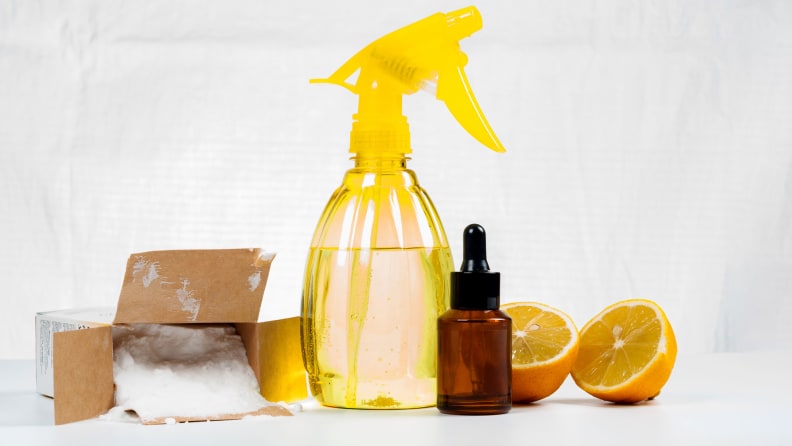
DIY cleaners are better for your wallet—and the environment.
It takes a whopping 1 to 2% of the world’s energy to make chlorine. In times like these, if you’re looking to disinfect surfaces to prevent the spread of the coronavirus, turn to the CDC for recommendations.
If you’re looking to wash your dishes or clothes, our tests show that some homemade detergents can perform better than store-bought products. In terms of your wallet, a household doing the annual average of 300 loads can spend anywhere from $70 to $150 if using one of our favorite eco-friendly detergents, steeper than picking up products like citric acid and sea salt.
While we don’t recommend buying all products in bulk, those with storage space to spare can squeeze even more savings by stocking up on baking soda, vinegar, and dish soap to deep clean your toaster, microwave, coffee pot, and other appliances.
Please take note: Be aware of what you’re mixing to avoid unsafe chemical reactions.
Get the Sally's Organics glass spray bottle at Amazon for $15.98
6. Turn on a fan when you can
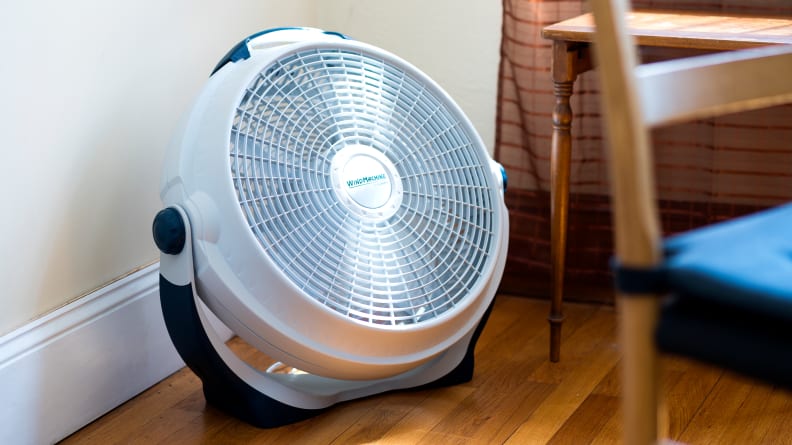
Fans consume a fraction of energy compared to air conditioners.
Heating and cooling accounts for more than half of your home's energy consumption, according to the U.S. Energy Information Administration.
When the temperature is below 90 degrees and there’s low humidity, plug in a fan to keep yourself cool. They consume a fraction of electricity compared to air conditioners. In fact, leaving one on for a full 24 hours is still less energy than running the AC for 15 minutes.
In cooler months, turn down the heat and put on a sweater. For every 8 hours the thermostat is one degree lower, you can save 1% on your bill that year, per the U.S. Energy Department.
You could even upgrade to a smart thermostat that can automatically control the temperature based on motion sensors and other features. Many Nest users say they’ve seen sizable savings on their bills, with the company estimating about $140 per year.
- Get the Vornado 660 at Target for $99.99
- Get the Emerson Sensi WiFi Smart Thermostat at Home Depot for $129
7. Try a bidet
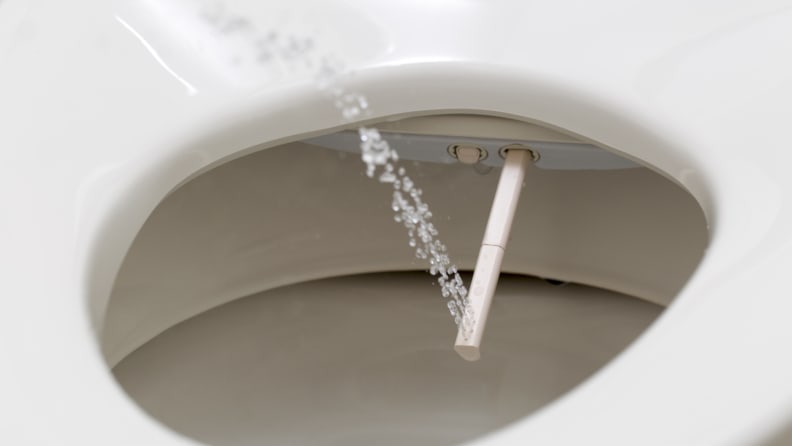
More and more Americans are using bidets.
Stop flushing money down the toilet. The average American uses 42 rolls of two-ply toilet paper a year, and even more if you're working from home. That’s a total of about $50 per individual if you reach for our favorite toilet paper, Charmin Ultra Soft. TP manufacturing is a leading cause of deforestation, and on top of that, 37 gallons of water is used to produce a single roll.
Worldwide, billions of people use bidets, and the fixture is gaining popularity in the U.S. with the current toilet paper shortage. No need for a full-blown bathroom reno. There’s easy-to-install attachments like the Tushy, which requires zero electricity—and is good for hygiene, too.
Another thing that might be costing you money: those so-called flushable wipes you’re buying. They don’t break down and can clog your septic system, meaning you might get stuck with a surprise bill.
Get the Classic bidet attachment at Tushy starting at $79
8. Use a compost bin

Eliminating food waste leads to noticeable savings.
Discarded food makes up the largest portion of landfills, and it’s one of the top producers of greenhouse gases. Eliminating food waste can add up to some serious savings: $370 per individual, by the USDA’s count.
This starts with being more mindful while grocery shopping as well as keeping stock of soon-to-expire items in your refrigerator, though you could also see additional savings if you live in a city or town that implements a pay-as-you-throw program. By composting organic waste such as coffee grounds, fruit and veggie scraps, and egg shells, you’re producing less garbage and paying less toward collection fees. It’s saving colleges, sports venues, and businesses millions.
And a compost bin is twice as nice if you’ve got a green thumb, with a chunk of change saved on gardening supplies.
Get the OXO compost bin at the Container Store for $15.99
The product experts at Reviewed have all your shopping needs covered. Follow Reviewed on Facebook, Twitter, and Instagram for the latest deals, product reviews, and more.
Prices were accurate at the time this article was published but may change over time.
Related content
-

The Best Credit Cards to Help You Save Money of 2020best-right-now
-

The Best Credit Cards for New Homeowners of 2020best-right-now


